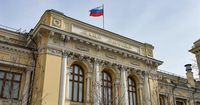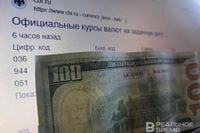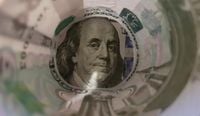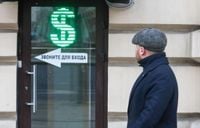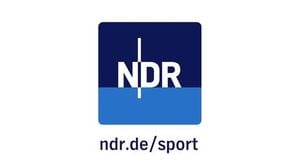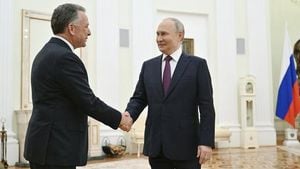The Russian ruble has seen significant fluctuations in recent weeks, with the dollar exchange rate recently dipping below 81 rubles for the first time since last summer. The Central Bank of Russia set the official dollar exchange rate for April 22, 2025, at 80 rubles and 76 kopecks, marking a decrease of 38 kopecks from the previous day. This drop in the dollar value is notable as it represents the lowest level for the American currency since July 2023.
In contrast, the euro has experienced a rise, increasing by 1 ruble and 45 kopecks to reach 93 rubles and 67 kopecks. Additionally, the Chinese yuan has slightly decreased, now valued at 11 rubles and 6 kopecks.
Experts attribute the strengthening of the ruble to several factors, including rising oil prices and a reduction in geopolitical tensions. Since the beginning of 2025, the ruble has been gradually gaining strength, a trend that has been welcomed by many in the financial sector.
According to Evgeny Nadorshin, chief economist at the consulting firm PF Capital, the current exchange rates are a reflection of market speculation rather than a stable economic foundation. He expressed skepticism about the sustainability of the ruble's strength, stating, "The market irrationally assesses the prospects. This current situation can be called speculation. However, expectations alone will not support the ruble for long." Nadorshin further warned that unless peace agreements lead to a reduction in sanctions, there would be no substantial reasons for the ruble to continue appreciating.
On the international currency market Forex, the dollar traded below the 79 ruble mark, marking a significant milestone as it fell to 78.2538 rubles, a decrease of 4.68%. This drop occurred for the first time since late May 2023. On the Russian interbank market, the dollar lost 2.08%, falling to 79.925 rubles.
The fluctuations in currency values have raised questions among investors about the best strategies moving forward. Nadorshin believes that buying dollars is currently a reasonable investment strategy, particularly for those willing to engage in currency speculation. He stated, "Speculation on the currency for those who are ready to consider it as a way to earn money is one of the most interesting. No ruble bonds, stocks, real estate, and even deposits no longer look so interesting." He suggests that those looking for high earnings in a short period should consider currency speculation as a promising avenue.
Conversely, Rustem Shayakhmetov, head of the investment company R-Invest, holds a different perspective. He cautioned against making predictions, citing the unpredictable nature of the current economic climate. Shayakhmetov emphasized the importance of being cautious, stating, "If there are funds available, they can be invested, but there is no guarantee of profit. I would advise investing in deposits, which currently offer high returns."
Shayakhmetov also highlighted the complexities of the current situation, noting that future developments will depend heavily on foreign policy conditions and the resolution of the ongoing conflict in Ukraine. He remarked, "We need to understand that we are very dependent on the American and European currencies, but at the same time, there has been an emergence of the Chinese currency. As we increasingly tie ourselves to the yuan and Chinese financial instruments, we will find ourselves dependent on multiple players."
The Central Bank of Russia's recent actions, including lowering the dollar exchange rate and adjusting the euro and yuan rates, reflect a broader strategy to stabilize the economy amid fluctuating global market conditions. The bank sets official exchange rates based on bank reports and information from over-the-counter trading, which influences how currencies are valued during the week.
As the ruble continues to strengthen, investors and economists alike are keeping a close eye on the situation. The interplay of oil prices, geopolitical developments, and economic policies will undoubtedly shape the future of the Russian currency. With predictions ranging from further strengthening to potential declines, the uncertainty in the market remains palpable.
In summary, the current state of the Russian ruble illustrates the complexities of currency markets and the myriad factors that influence exchange rates. As experts continue to analyze the situation, the outlook for the ruble will depend on both domestic economic policies and international relations.
